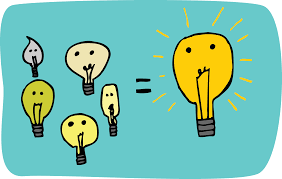Introduction
We understand the importance of creative problem-solving in today’s fast-paced and competitive world. In this article, we will present you with 10 effective strategies that can help you overcome challenges and find innovative solutions to complex problems. By implementing these techniques, you will not only enhance your problem-solving skills but also gain a competitive edge in your professional and personal endeavors.
1. Embrace a Growth Mindset
To excel in creative problem solving, it is crucial to adopt a growth mindset. Embrace the belief that your abilities and intelligence can be developed through dedication and hard work. By doing so, you will approach challenges with enthusiasm and resilience, viewing them as opportunities for growth rather than obstacles.
2. Encourage Diverse Perspectives
When tackling a problem, seek input from individuals with diverse backgrounds, experiences, and expertise. By incorporating different perspectives, you can gain a broader understanding of the issue at hand and identify unique solutions. Foster an inclusive and collaborative environment that values and encourages diverse opinions.
3. Practice Active Listening
Active listening is a fundamental skill that contributes to effective problem-solving. When engaging in discussions or brainstorming sessions, give your undivided attention to others, demonstrate empathy, and ask thoughtful questions. This approach allows you to grasp different viewpoints, identify underlying concerns, and develop innovative solutions collaboratively.
4. Utilize Design Thinking
Design thinking is a human-centered approach that can greatly enhance your problem-solving abilities. It involves understanding the needs of the end-users, generating multiple ideas, prototyping, and iterating until an optimal solution is reached. By employing this iterative process, you can uncover innovative and user-centric solutions to complex problems.
5. Apply Root Cause Analysis
When confronted with a problem, it is essential to identify its root causes rather than solely addressing the symptoms. Conduct a thorough analysis to determine the underlying factors contributing to the issue. By addressing the root causes, you can develop comprehensive solutions that prevent the problem from recurring in the future.
6. Foster a Culture of Innovation
Creating a culture that encourages and rewards innovation is vital for sustained problem-solving success. Establish an environment where creativity is nurtured, risks are embraced, and ideas are celebrated. Encourage employees to think outside the box, experiment with new approaches, and share their insights openly.
7. Break Problems into Smaller Tasks
Large problems can often be overwhelming and difficult to tackle. Break them down into smaller, more manageable tasks. By dividing the problem into bite-sized pieces, you can approach each component systematically, focus your efforts effectively, and make steady progress towards a solution.
8. Use Visualization Techniques
Visualization techniques can be powerful tools for stimulating creative problem-solving. Whether through mind mapping, flowcharts, or diagrams, visually representing the problem and potential solutions can help you organize your thoughts, identify patterns, and uncover new perspectives.
9. Embrace Experimentation and Iteration
Recognize that creative problem-solving is an iterative process. Embrace experimentation and embrace a willingness to learn from failures. Test out different solutions, gather feedback, and refine your approach based on the results. Through this iterative cycle, you can refine and optimize your problem-solving strategies.
10. Continuous Learning and Improvement
Finally, never stop learning. Stay updated with the latest industry trends, technologies, and problem-solving methodologies. Attend workshops, seminars, and training programs to enhance your skills continually. By investing in your professional development, you will remain at the forefront of creative problem-solving and consistently outperform your competition.
Conclusion
By implementing these 10 effective strategies for creative problem-solving, you can unlock your full potential and gain a competitive advantage. Embrace a growth mindset, encourage diverse perspectives, and practice active listening. Utilize design thinking, apply root cause analysis, and foster a culture of innovation. Break problems into smaller tasks, use visualization techniques, and embrace experimentation. Lastly, never stop learning and strive for continuous improvement. With these approaches, you will consistently find innovative solutions that propel you ahead in the dynamic and challenging landscape of problem-solving.
Remember, at We are dedicated to empowering individuals and organizations with the tools and knowledge they need to excel in creative problem-solving. Embrace these strategies, adapt them to your unique circumstances, and witness the transformative impact they can have on your problem-solving abilities.


Comments are closed.